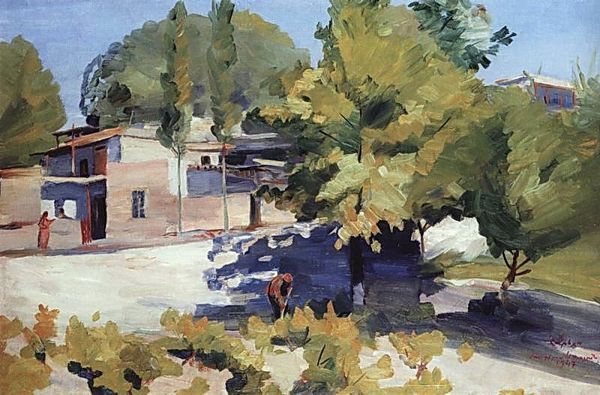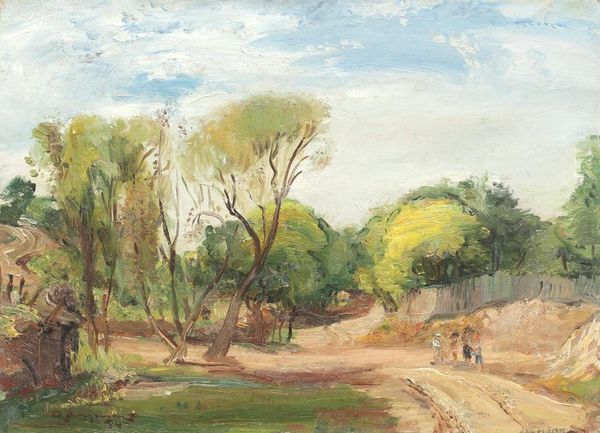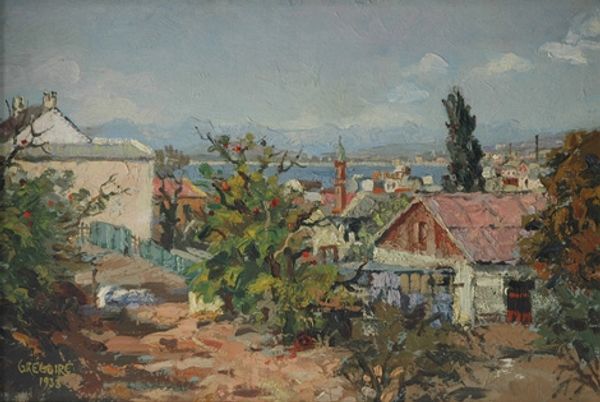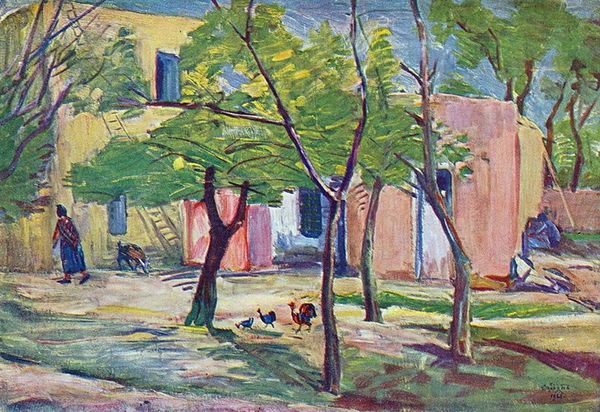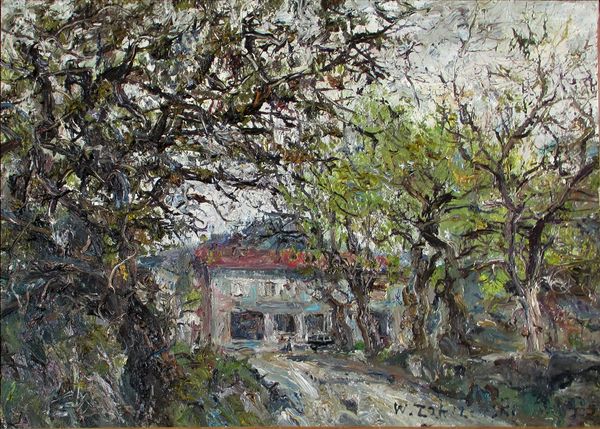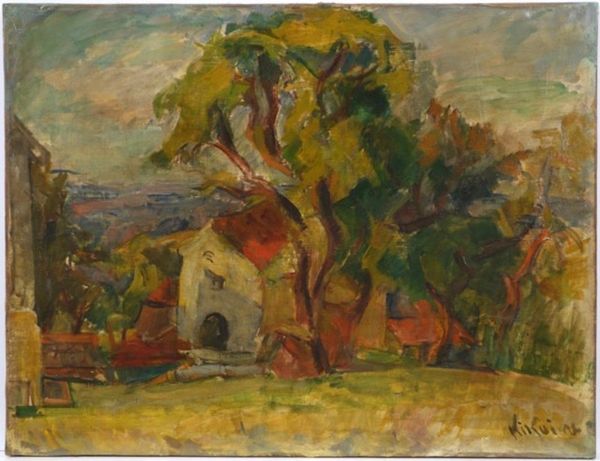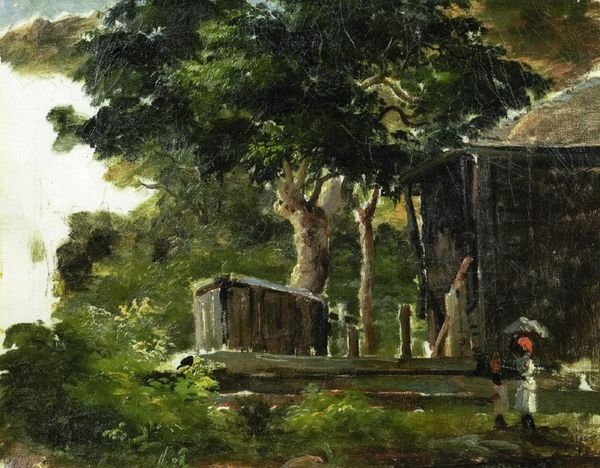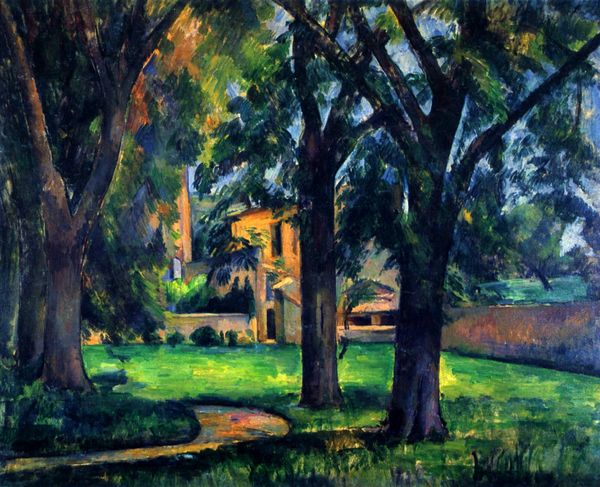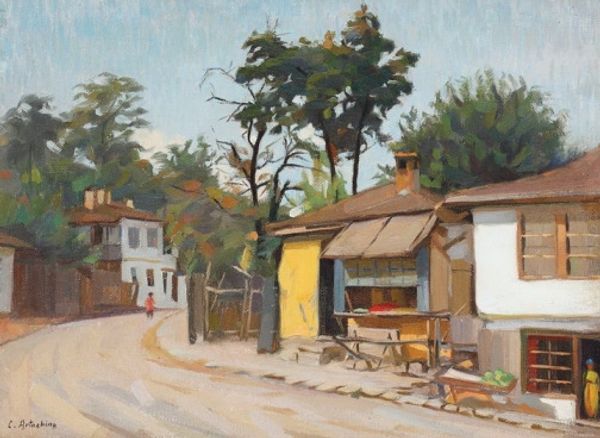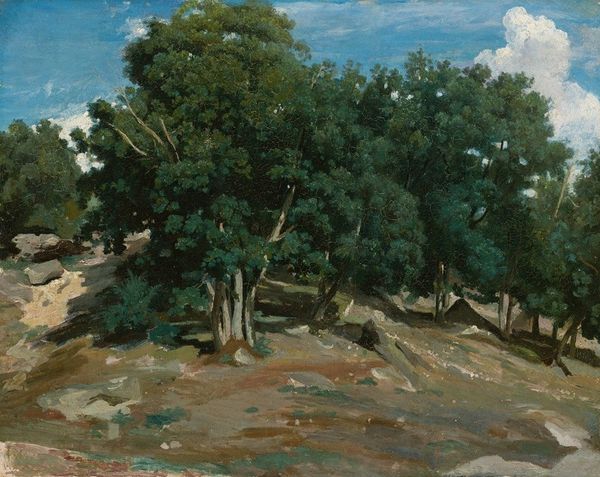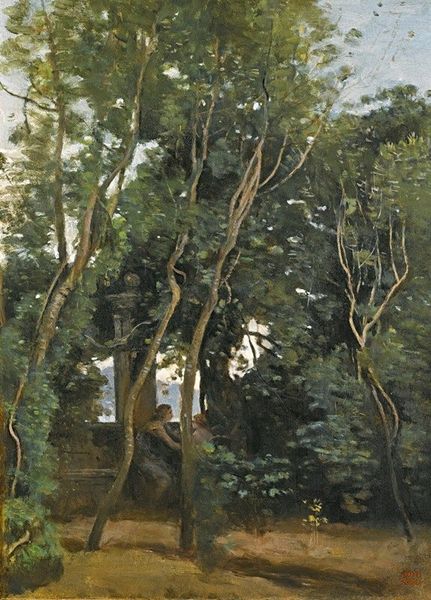
Dimensions: 85 x 136 cm
Copyright: Martiros Sarian,Fair Use
Editor: This is “Under the Apricot Tree,” painted in 1954 by Martiros Sarian using oil paint. I’m struck by how much activity is crammed into a relatively small space – figures, buildings, even chickens, all bathed in sunlight filtered through the apricot tree. What do you see in this piece? Curator: I see a microcosm of Armenian life, viewed through a post-impressionistic lens but imbued with the specificities of a culture experiencing displacement and renewal after the diaspora and the Soviet era. The painting’s genre style serves to ground Armenian identity and celebrate it via everyday interactions. Editor: Could you say more about the figures? I notice that they blend into the shadows of the tree. Curator: Look at the posture, the gatherings under the shade of the tree. How do these inform your understanding? Are they in conversation or simply coexisting in shared spaces? Sarian shows that individuals shape a collective identity and commonality even if they come from various socioeconomic backgrounds and experiences. Editor: That’s interesting, I hadn’t thought about it in terms of shared space or social collectivity before. Is it relevant to understanding his larger body of work? Curator: Absolutely. Considering Armenia's complex relationship with the Soviet Union and the artist’s negotiation with prescribed Socialist Realism can broaden our awareness about the power of individual experience to reshape artistic approaches and ideologies. What might it mean for these everyday gatherings to occur beneath a fruit tree? Editor: That is really insightful. Thanks for sharing that context! I appreciate how this piece connects history with an ordinary scene. Curator: It's through these subtle visual cues and shared experiences that we can truly grasp the power of art in negotiating collective memory and forging new narratives.
Comments
No comments
Be the first to comment and join the conversation on the ultimate creative platform.
